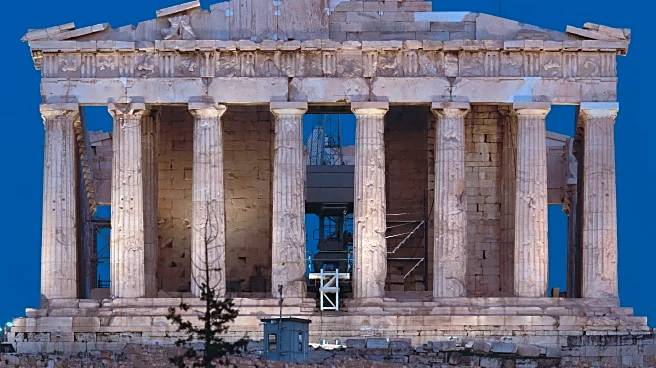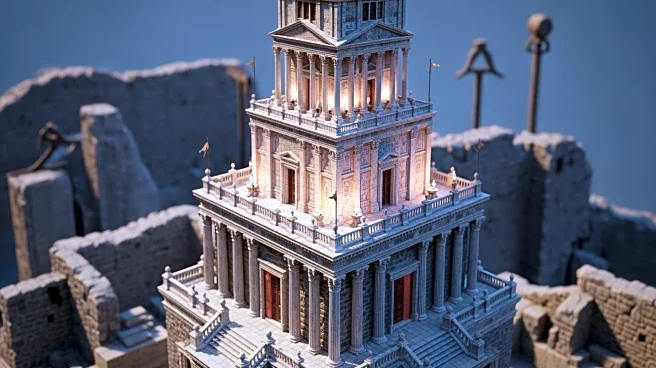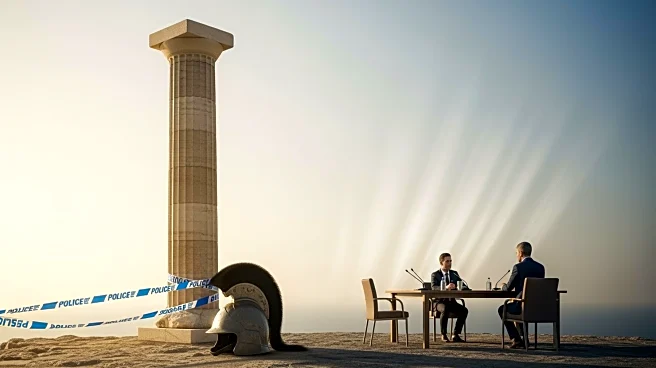ATHENS, Greece (AP) — It was a rare sight on Athens’ skyline, and it didn't last long: The Parthenon was without scaffolding for the first time in years.
Greek residents and visitors in recent weeks enjoyed
an unobstructed view of the marble temple crowning the Acropolis during its seemingly endless restoration.
Here’s a look at the lasting significance of the Parthenon, by the numbers.
The number of weeks, roughly, that the Parthenon stood without scaffolding. The web of metal supports was cleared away on Sept. 26.
Culture Minister Lina Mendoni called the sight “breathtaking,” saying the gleaming temple looked almost new. That’s quite a compliment for a building that has stood for almost 2,500 years.
How many years, at least, that the Parthenon has featured scaffolding, according to its restoration service.
Last week, lighter and less intrusive scaffolding was installed for fine-tuning restoration work on the western façade, ending the rare and unobstructed view.
The number of highly specialized staff — including engineers, archaeologists, conservators, designers, marble craftsmen and technical and administrative personnel — who work on Acropolis restoration projects.
The current phase of the Parthenon's conservation began in 1975. It has taken more than three times as long as it took the ancient Athenians to build it.
The number of years it took to build the Parthenon, and the number of years since its completion.
Construction began in 447 BC and was completed in 432 BC. It is one of four major temples on the Acropolis, together with the Erechtheion, the Propylaea and the Temple of Athena Nike. Together, they tell the story of Greece’s Golden Age and the unmatched skill of its builders.
In its prime, the temple dazzled with color and gold. Traces of blue, red and green paint remain on its carvings. Inside stood a colossal statue of Athena made of ivory and nearly a ton of gold. The outer friezes showed mythic battles, while a marble band depicted a grand festival parade through ancient Athens.
The distance, in kilometers, that marble used to build the Parthenon was transported from a quarry at Mount Pentelikon. That’s nearly 11 miles. Workers hauled the stone using carts, ramps and wooden cranes. Modern restorers use Pentelic marble from the original quarry area to replace missing parts, joined with titanium rods and non-corrosive mortar.
The number of its fluted outer columns, standing a little over 10 meters (32.8 feet) tall. The columns are tapered and lean inward, which along with a gently arched floor create the illusion of perfect symmetry. Four of the columns have not been restored to their full height.
The number of scattered marble blocks that conservators have recorded and identified since the 1980s before fitting each back into its proper place like pieces of a colossal puzzle. The latest phase focuses on refitting 360 ancient wall stones and carving 90 new ones to rebuild parts of the temple’s inner sanctuary. The goal isn’t to recreate the original temple completely but to stabilize it, preserving as much authentic material as possible.
The number of rusted iron clamps from earlier repairs that, as part of the current restoration effort, have been replaced with titanium fasteners designed to last for centuries.
The number of people who came to the Acropolis in 2024, making it Greece’s most-visited site.
The year that the current stage of restoration is expected to conclude, according to Mendoni. She said that will mark “the last phase before the Parthenon is completely freed from scaffolding.”













